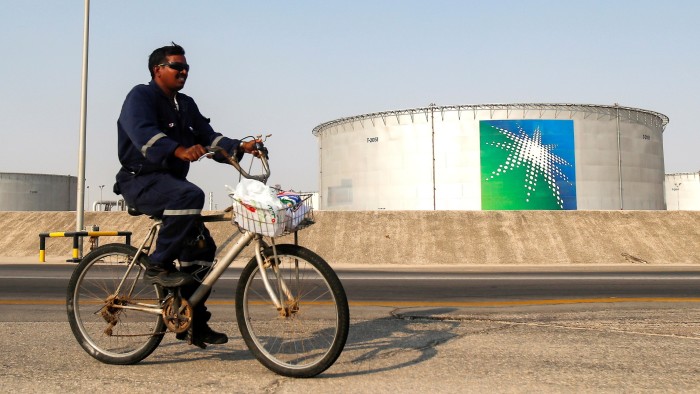Unlock the Editor’s Digest for free
Roula Khalaf, Editor of the FT, selects her favourite stories in this weekly newsletter.
Saudi Aramco reported a fall in first-quarter profits, resulting in a $10bn cut to its dividend and lowering a key source of funds for Saudi Arabia’s budget amid an uncertain outlook for oil prices.
The world’s largest oil company’s net income dropped 5 per cent from a year earlier to $26bn. Its average realised oil price was $76.30 a barrel, compared with $83 a barrel in the same quarter last year.
While the performance was better than that of some of its peers, including BP and Shell, whose first-quarter profits halved and fell by 28 per cent respectively, Aramco cut its total dividend to $21.4bn from $31bn in the final quarter of last year.
The group had already announced in March that its total payout this year would be about $85bn, sharply lower than the $124bn it paid out in 2024.
Lower payouts from Aramco dividends will add to pressure on Saudi Arabia’s budget as the government and state-linked entities such as the Public Investment Fund spend billions of dollars to diversify the economy away from its dependence on oil revenues.
The economic diversification programme launched by Crown Prince Mohammed bin Salman features several ambitious so-called gigaprojects, including a futuristic zone in the country’s north-west coast called Neom.
The kingdom’s deficit widened to $15.6bn in the first quarter, up from $3.3bn in the same period in 2024 as oil revenues fell 18 per cent, the Ministry of Finance said on Monday.
Amin Nasser, Aramco’s president and chief executive, said: “Global trade dynamics affected energy markets in the first quarter of 2025, with economic uncertainty affecting oil prices.”
Since the end of the quarter, oil prices have fallen a further 15 per cent, to about $64 a barrel, after US trade tariffs and fears of an oversupply after Opec+, the Saudi-led oil cartel, sharply raised production for the year.
Aramco gave no guidance about whether it would have to adjust its dividend further, or cut its spending, but noted that “disciplined capital planning and execution” were vital during periods of oil price volatility.
Riyadh is already recalibrating its spending by scaling back some projects and extending others over a longer period of time.
But the country is facing a daunting set of deadlines to build infrastructure ahead of hosting a series of big events, including Expo 2030 and the Fifa World Cup in 2034.
The government and Saudi Arabia’s main wealth fund, the PIF, together own more than 97% of Aramco.
Despite lower oil prices, Saudi Arabia and fellow members of the Opec+ coalition are pushing ahead with production increases.
At the start of this month, eight Opec+ members including Saudi Arabia and Russia, said they would increase supply by 411,000 barrels a day in June, the second consecutive monthly output increase.
Jorge León, at energy consultancy Rystad, said at the time it was a “bombshell” decision reflecting a shift in strategy from the group.
https://www.ft.com/content/19cbb749-ff49-48bf-82c2-49d9b2b0a35f


